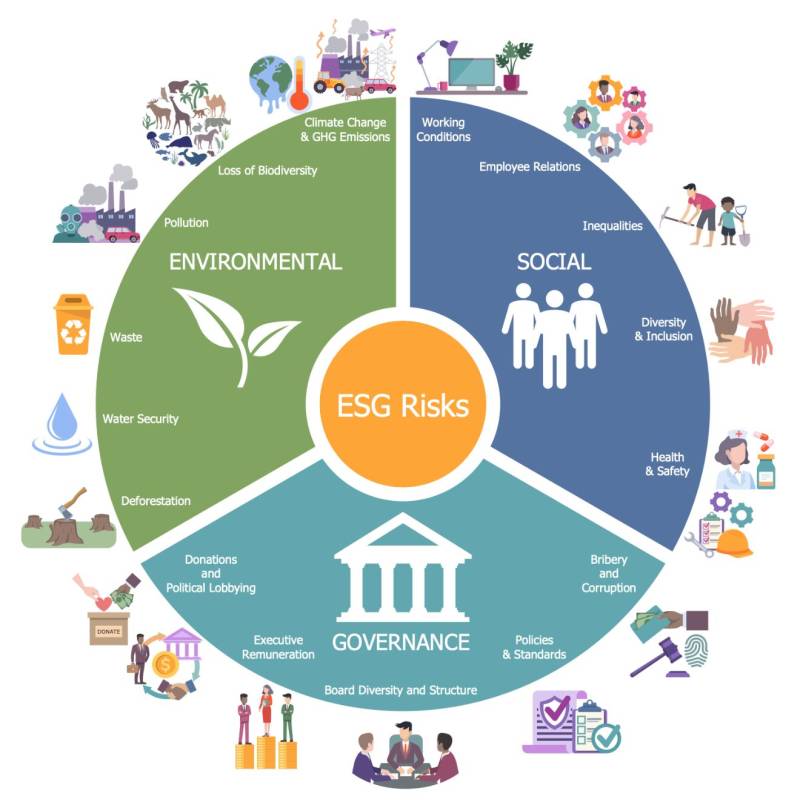How Sustainable Financial Engineering Can Revolutionize the Stature of Asian Development’s Projects in the Subcontinent

Written by: Muhammad Abraham Asif
The Asian subcontinent now depends on sustainable financial engineering (SFE) to reinforce the lasting operational sustainability of its development projects. The Asian Development Bank (ADB) and its affiliated institutions need structured financial tools together with risk mitigation systems and impact investment structures to enhance project success according to Asian Development Bank (2022). This volatile economic situation of the region demands new funding approaches that minimize both fiscal risks and provide lasting financial stability.
Traditional lending tactics have historically captured financial engineering in the subcontinent and thus make national economies susceptible to external financial disturbances. South Asian economies suffocate their development plans through debt distress cycles which emerged because they depend too heavily on sovereign debt and multilateral borrowing. The economies of both Pakistan and Bangladesh experience economic disruptions when their external borrowing rates become unstable. The transition toward sustainable financial engineering emerges because nations require a reduction in credit institution dependence while developing investment methods that improve financial independence in the region.
Development financing faces its main challenge through heavy dependence on sovereign debt instruments and traditional lending systems because these structures weaken nations' economic stability during periods of recession (Ghosh & Mukherjee, 2021). Resilient funding mechanisms which protect projects against external shocks can be built through financial engineering methods that include blended finance models together with catastrophe bonds (International Monetary Fund, 2021). Sustainability-linked bonds create a financial system that links performance indicators related to environmental and social responsibility to project longevity (Mahmood & Rehman, 2023).
Sustainable financial engineering transforms energy and infrastructure projects through the adoption of structured finance solutions particularly green securitization. When renewable energy assets get securitized it leads to the development of secondary markets for debt products which in turn draw institutional investors away from dependence on multilateral funding sources (Hussain et al., 2022). India demonstrates an example of financial sustainability through its implementation of infrastructure investment trusts (InvITs) in solar and wind power projects to secure extended funding thus creating a pattern for other parts of the subcontinent (Rana & Choudhury, 2021).

Foreign direct investment and project viability face problems from currency volatility according to the International Monetary Fund (2022). The utilization of currency swaps and hedging instruments creates exchange rate stability to protect capital-intensive infrastructure projects from currency devaluation risks as specified in Khan & Awan (2021). The Belt and Road Initiative of China demonstrates through multi-currency funding that South Asian economies can learn from regarding reducing currency risks in partner countries (Zhao, 2020).
The subcontinent's infrastructure funding stability improves through two complementary instruments which include sovereign wealth funds alongside regional credit guarantee programs. Through their strategic developmental project investments India’s National Investment and Infrastructure Fund (NIIF) functions as a pivotal component of the sovereign wealth fund network. The distribution of these funds throughout South Asia would establish internal resources for long-term infrastructure development while the existing system of government debt contracts runs out. The infrastructure development process receives reduced investment risk perception through regional credit guarantees which are supported by multilateral institutions thus leading to lower borrowing costs. Financial instruments integrated with development financing enhance emerging economies' access to credit through an improved investor confidence scheme.

SFE depends heavily on impact investment frameworks which combine financial and social goal achievement as per Stiglitz (2021). Development impact bonds (DIBs) used in education and healthcare sectors show financial engineering can use performance-based funding to achieve improved results in public sector projects (Ahmed & Saeed, 2023). The implementation of blockchain-based smart contracts enables better transparency and lowered fund distribution inefficiencies to elevate sustainable development initiative confidence among investors (Rahman & Qureshi, 2022).
Digital financial ecosystems reshaped the sustainable financial engineering field as they emerged in the market. Data-driven credit assessment methods utilized by governments along with financial institutions boost their capability to determine investment risks better resulting in data-based funding choices. The decentralized finance (DeFi) platform based on blockchain tech functions as a substitute to traditional banking with lending solutions that help fund infrastructure development among small/medium enterprises. Financial inclusion gets stronger through alternative credit scoring methods that use non-banking data to extend capital beyond excluded industries therefore bolstering project resilience.

The subcontinent needs well-developed legislative guidelines and experience development across sectors to expand financial engineering solutions (Asian Development Bank, 2023). Financial policy unification among South Asian countries serves as a fundamental factor that directs investment between nations and clears regulatory obstacles (Mehta, 2021). Collaborative platforms like the South Asian Association for Regional Cooperation (SAARC) provide an opportunity to align policies and share knowledge through which sustainable financial instruments can be adopted better (Raza & Malik, 2020).
The adoption of sustainable financial engineering techniques brings transformative benefits to enhance project economic resilience within Asian Development. The subcontinent can attain economic stability in the long-run after deploying structured financial products together with enhanced currency stability mechanisms and impact-driven investment strategies to solve developmental gaps. The full potential of this opportunity demands official collaboration between both financial institutions plus international development organizations alongside policymakers to establish a sustainable financial system.
References
Asian Development Bank (ADB) (2022) Financial Innovations for Sustainable Infrastructure Development in Asia. ADB Publications.
Asian Development Bank (ADB) (2023) Harmonizing Financial Regulations for Cross-Border Investments. ADB Reports.
Ahmed, F. and Saeed, R. (2023) ‘Development impact bonds and their role in public sector funding’, South Asian Economic Review, 18(2), pp. 78–96.
Ghosh, P. and Mukherjee, S. (2021) ‘Overcoming debt reliance in South Asia’s development financing’, Journal of Economic Policy, 15(3), pp. 112–130.
Hussain, T., Khan, M. and Akram, J. (2022) ‘Green securitization and its role in financing renewable energy projects in Asia’, Renewable Energy Finance Journal, 10(4), pp. 56–79.
International Monetary Fund (IMF) (2021) South Asia’s Debt Sustainability and Financial Stability. IMF Working Paper.
International Monetary Fund (IMF) (2022) Foreign Exchange Risk and Macroeconomic Stability in Developing Countries. IMF Reports.
Khan, A. and Awan, H. (2021) ‘Managing currency volatility in Asian infrastructure projects’, Economic Policy Review, 20(1), pp. 45–62.
Mahmood, Z. and Rehman, S. (2023) ‘Sustainability-linked bonds and their impact on financial resilience’, Journal of Sustainable Finance, 25(2), pp. 98–120.
Mehta, P. (2021) ‘Regulatory frameworks for financial engineering in emerging economies’, International Journal of Finance, 13(1), pp. 67–84.
Rana, S. and Choudhury, B. (2021) ‘Infrastructure investment trusts as an alternative financing mechanism’, Asian Infrastructure Finance Journal, 5(3), pp. 34–50.
Rahman, A. and Qureshi, K. (2022) ‘Blockchain-enabled financial instruments for development projects’, Fintech & Development Finance, 8(1), pp. 123–140.
Raza, M. and Malik, T. (2020) ‘The role of SAARC in fostering financial cooperation in South Asia’, South Asian Journal of Policy Research, 17(4), pp. 80–97.
Stiglitz, J. (2021) Reimagining Global Finance: Lessons for Emerging Markets. New York: W.W. Norton & Company.
Zhao, L. (2020) ‘Multi-currency funding mechanisms in China’s Belt and Road Initiative’, Global Development Finance Review, 9(2), pp. 105–128.
